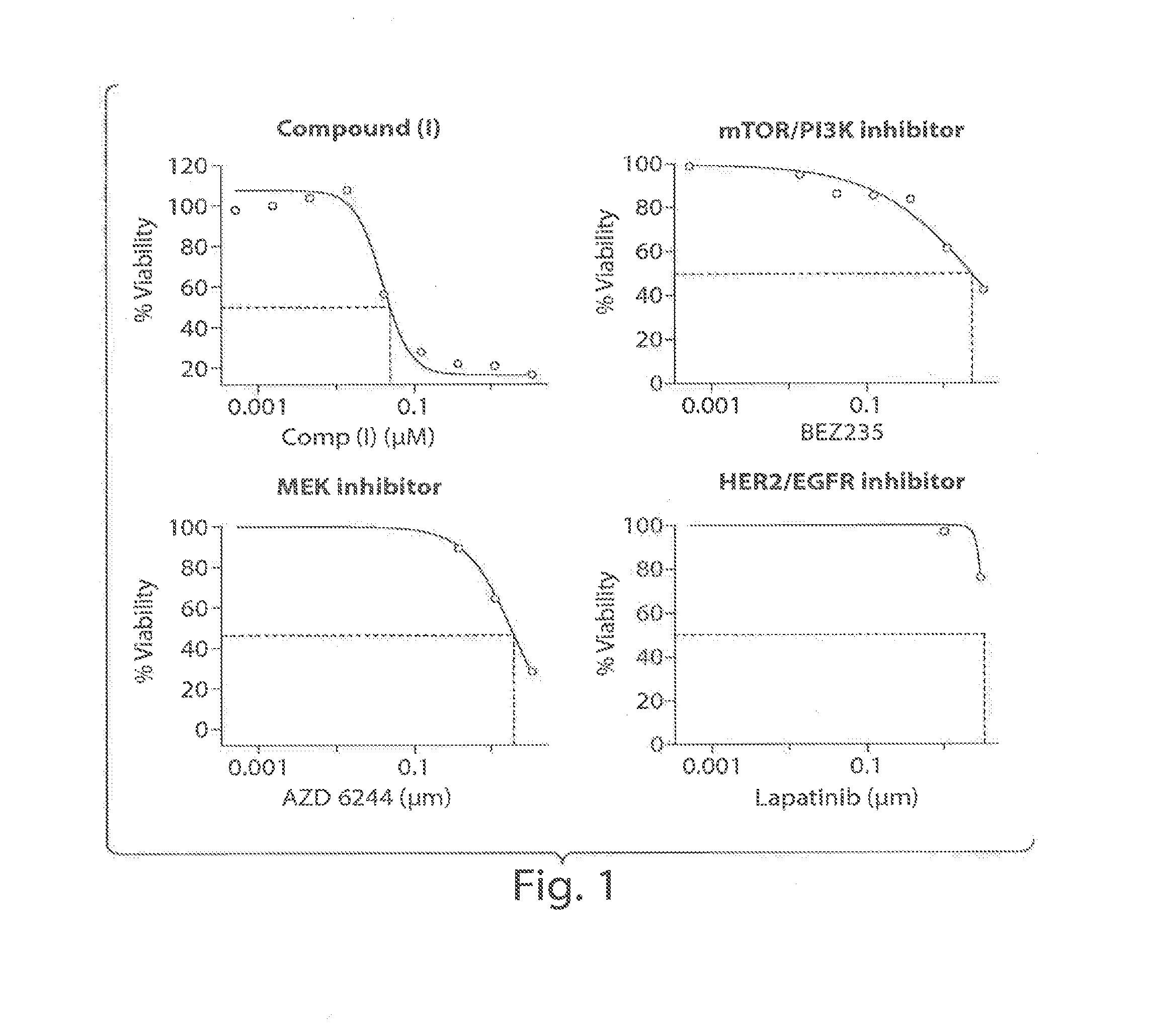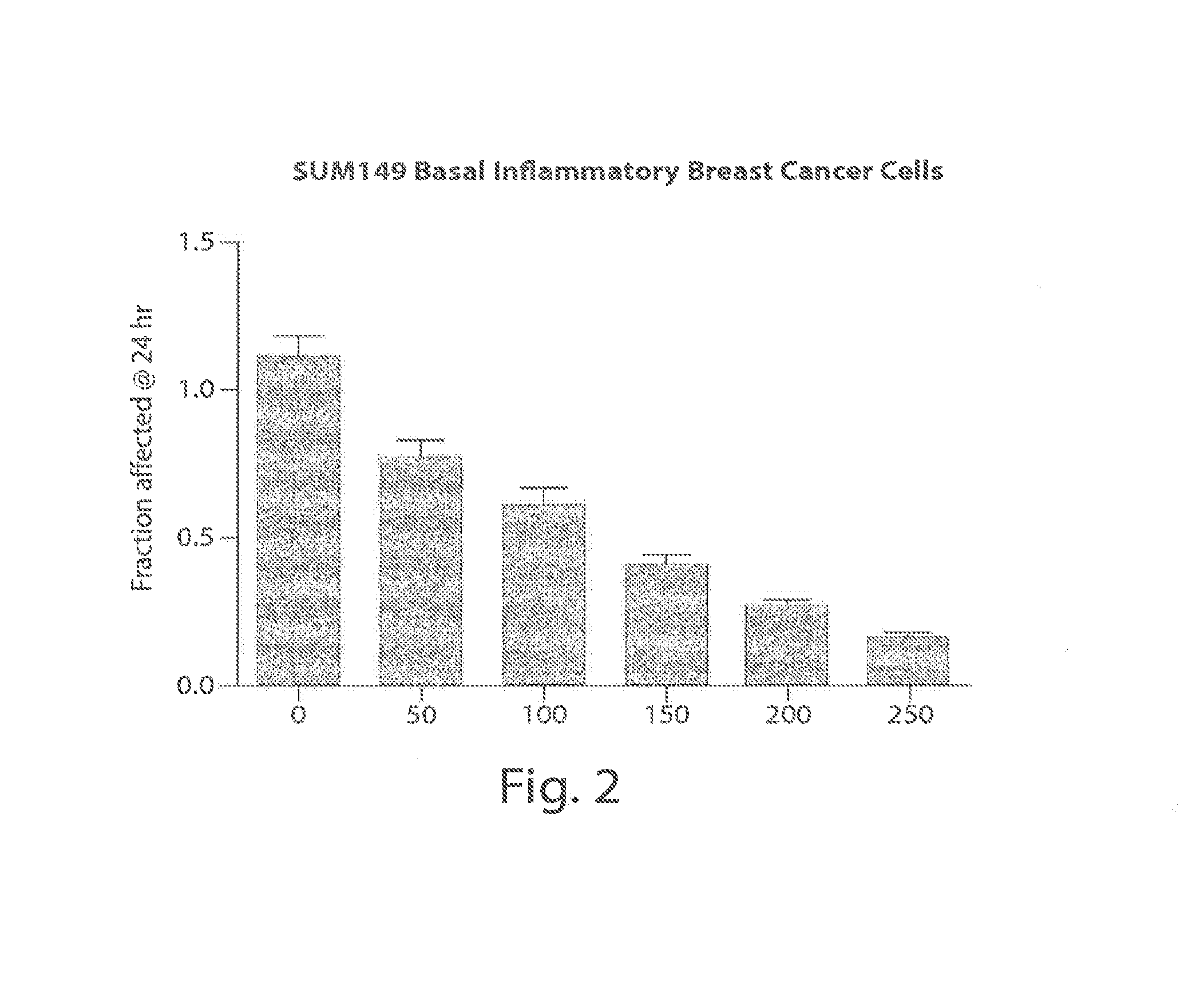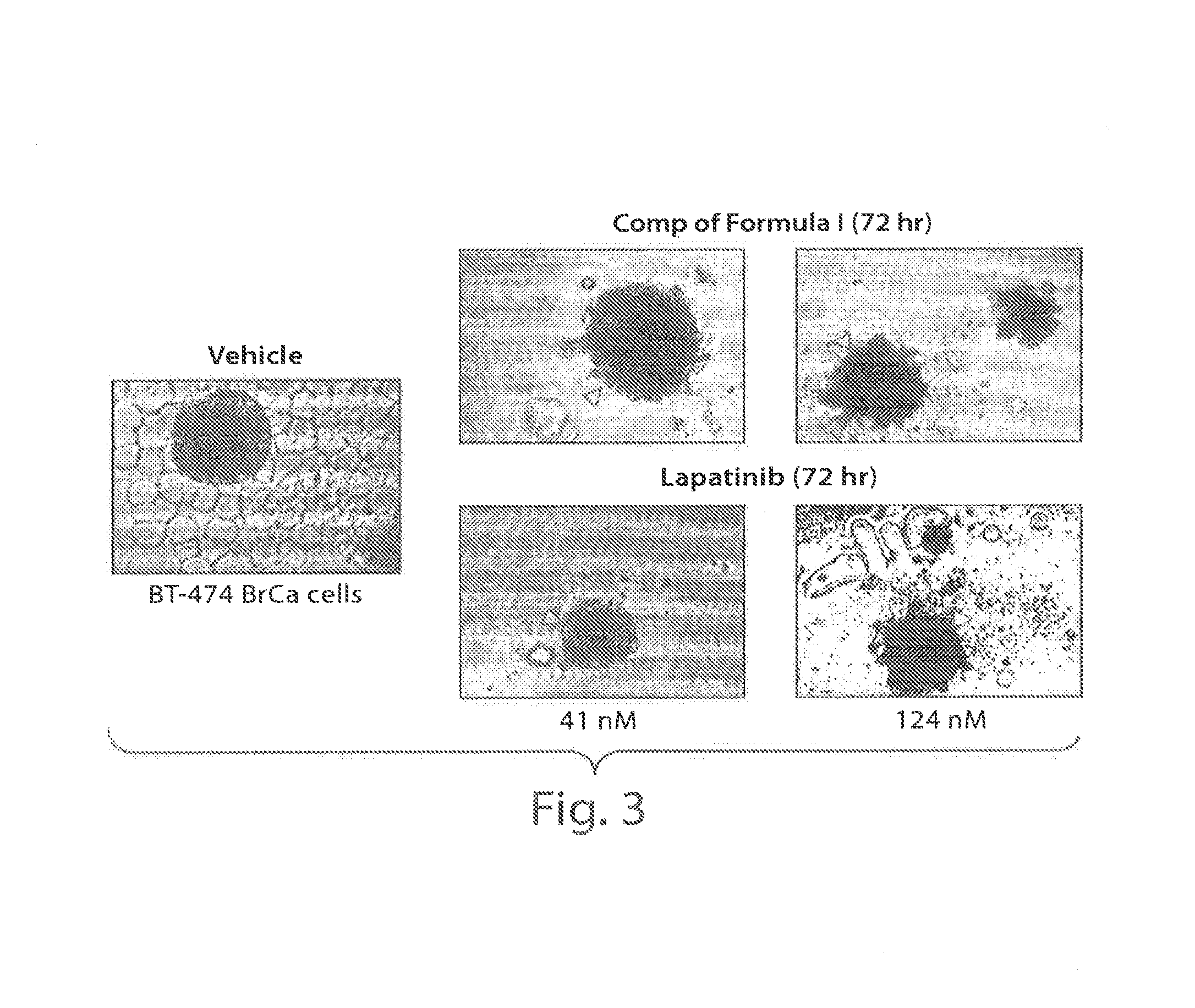Treating cancer with an hsp90 inhibitory compound
a technology of inhibitors and compounds, applied in the field of hsp90 inhibitors, can solve the problems of less likely to fully effect a therapeutic agent that acts on one molecular target, poor prognosis for the majority of patients diagnosed with cancer, and unsatisfactory current chemotherapy, and achieves the effects of low side effects, reduced side effects, and reduced side effects
- Summary
- Abstract
- Description
- Claims
- Application Information
AI Technical Summary
Benefits of technology
Problems solved by technology
Method used
Image
Examples
example 1
A Phase I Dose Escalation Study of the Compound of Formula (I) (Ganetespib) in Twice-Weekly Administration in Patients with Solid Tumors
[0177]An open-label Phase 1 dose-escalation study in subjects with solid tumors was performed. The first cohort consisted of three subjects who received 2 mg / m2 of compound of formula (I) during a 1-hour infusion 2 times per week (e.g., [Monday, Thursday] or [Tuesday, Friday]) for three consecutive weeks followed by a 1 week dose-free interval. The first infusion for the first three subjects was staggered by a minimum of 5 days between subjects. This staggered enrollment scheme was followed for the first cohort only. Subjects tolerating compound of formula (I) continued treatment past week 8 until disease progression as long as the re-treatment criteria continued to be met.
[0178]Subsequent cohorts were originally planned to receive escalating doses of 4, 7, 10, 14, 19, 25, 33, 40 and 48 mg / m2, provided that the previous dose was well-tolerated durin...
example 2
Efficacy of the Compound of Formula (I) in the Treatment of Triple Negative Breast Cancer Subject from Example 1
[0184]Triple-negative breast cancer (TNBC) represents 10-20% of all diagnosed breast cancer cases and tests negative for the presence of estrogen receptor (ER), progesterone receptor (PR), and the human epidermal growth factor receptor 2 (HER2). Therefore, this breast cancer subtype does not respond to hormonal therapy used to treat breast cancer, such as tamoxifen or aromatase inhibitors, or therapies that target HER2 receptors, such as Herceptin®. Triple-negative breast cancer is characterized as more aggressive than other breast cancer subtypes, disproportionately affects younger women, and is associated with a poorer 5-year survival rate of 77%, as compared to the 93% survival rate for other cancers. Triple-negative breast cancer is typically treated with a combination of therapies such as surgery, radiation therapy, and chemotherapy, however, early relapse and metasta...
example 3
Efficacy of the Compound of Formula (I) in the Treatment of Non-Small Cell Lung Cancer (NSCLC) by KRAS, EGFR, and ALK Mutation Status
[0186]A Phase 2 clinical trial was performed to determine the efficacy of the compound of formula (I) in the treatment of NSCLC.
[0187]Patients with advanced NSCLC who failed prior treatments received 200 mg / m2 of compound of formula (I) as a 1-hr infusion once weekly for 3 of a 4-wk cycle in a Simon two-stage study design assessing primary endpoint of PFS rate at 16 wks. Initial cohorts were defined by mutation status: A) EGFR mutation, KRAS wild-type B) EGFR wild-type, KRAS mutation C) EGFR wild-type, KRAS wild-type (WT). If ≧2 / 14 patients in A, B or C were progression-free at 16 weeks, enrollment increased to 23 patients for that cohort. Tumor response was assessed every 8 weeks. Cohort D was added to include 35 additional EGFR wild-type and KRAS wild-type patients with adenocarcinoma histology. FISH analysis for ALK translocation, was performed for ...
PUM
| Property | Measurement | Unit |
|---|---|---|
| Electrical resistance | aaaaa | aaaaa |
| Responsivity | aaaaa | aaaaa |
| Refractory | aaaaa | aaaaa |
Abstract
Description
Claims
Application Information
 Login to View More
Login to View More - R&D
- Intellectual Property
- Life Sciences
- Materials
- Tech Scout
- Unparalleled Data Quality
- Higher Quality Content
- 60% Fewer Hallucinations
Browse by: Latest US Patents, China's latest patents, Technical Efficacy Thesaurus, Application Domain, Technology Topic, Popular Technical Reports.
© 2025 PatSnap. All rights reserved.Legal|Privacy policy|Modern Slavery Act Transparency Statement|Sitemap|About US| Contact US: help@patsnap.com



